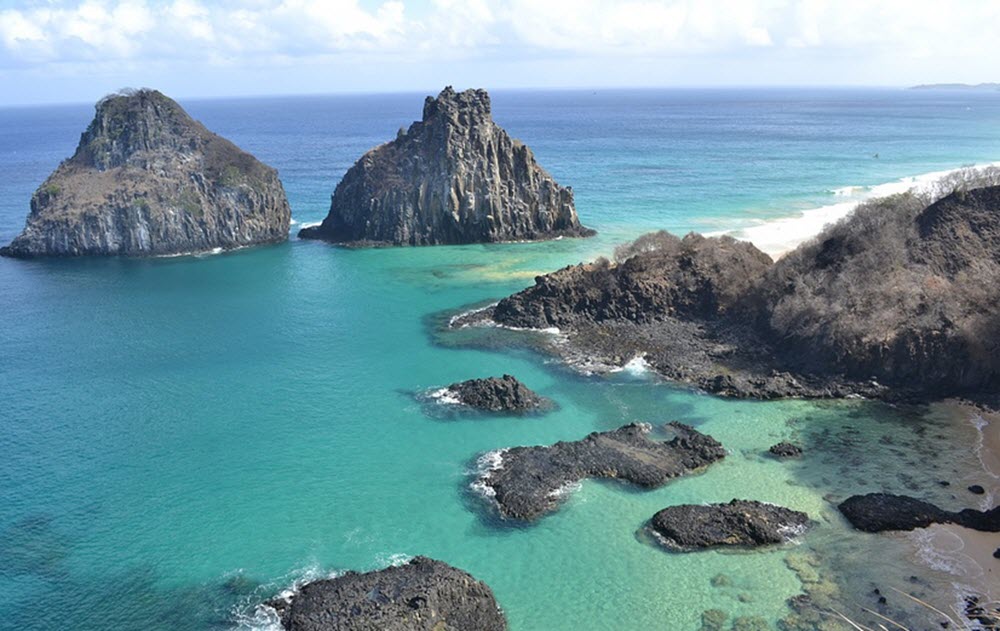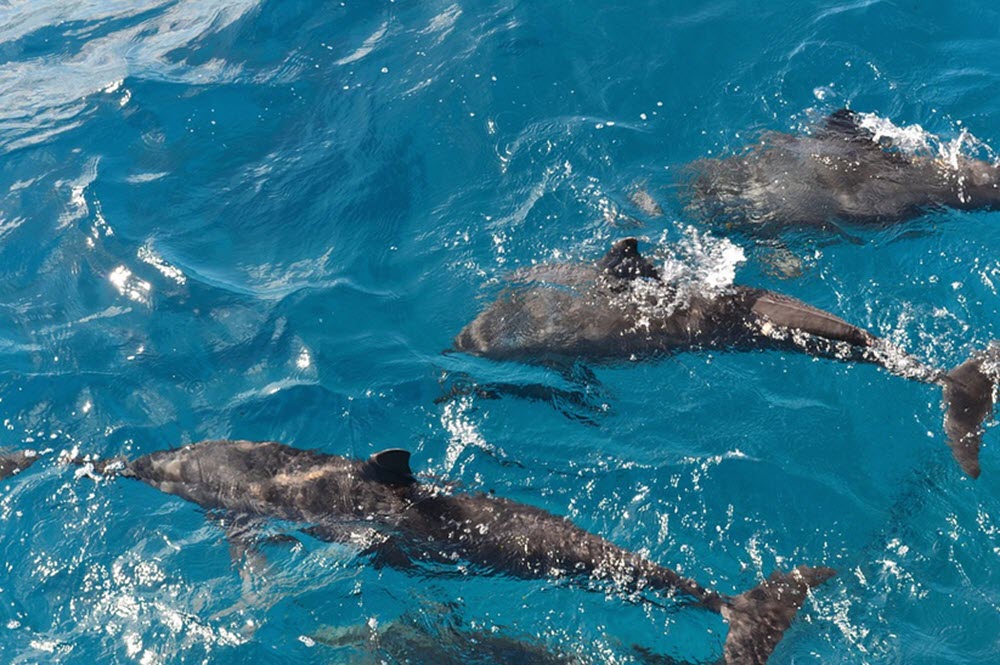Fernando de Noronha archipelago

Fernando de Noronha is an archipelago consisting of 21 islands and islets located more than 350 km offshore from the Brazilian mainland.
The islands and islets that form this archipelago are the peaks of an otherwise submerged mountain range of volcanic origin. The archipelago takes its name from the main island, which is the only inhabited one. The archipelago´s total area is 26 square meters, and the main island (Fernande de Noronha) is 18.4 square kilometres. The other islands are named Ilha Rata, Sela Gineta, Cabeluda and São José, and the archipelago also contains various isletas.

Some facts about Fernando de Noronha
- Baia de Golfinhos (Dolphin Bay) has a very large population of resident dolphins.
- The beaches Praia do Sancho and Praia do Leão are widely considered to be two of Brazil´s most beautiful beaches.
- The Rocas Atoll has an amazing seascape, especially at low tide when a natural aquarium is formed, filled with fish and other marine organisms.
- Fernando de Noronha is important for the conservation of the endangered Hawksbill sea turtle.
- The archipelago has the largest concentration of tropical seabirds in the Western Atlantic Ocean.
- The archipelago contains the only remaining Insular Atlantic Forest and the only oceanic mangrove in the South Atlantic region.
- The archipelago is important for the reproduction and feeding of tuna fish and shark.
Is Fernando de Noronha a part of Brazil?
Yes, the whole archipelago is a part of Brazil. It is administered by the government of the tate pf Pernambuco.
Getting there
The island is served by Gov. Carlos Wilson Airport.
Tourism
Tourism is the major component of the archipelago´s economy and a lot of the poeple who live on the main island work in tourism. Tourists chiefly come to the archipelago to enjoy the beautiful nature and go scuba diving, dolphin watching and charter fishing. There are also several nice beaches here.
Beaches
Examples of beaches facing the mainland: Baía do Sancho, Baía dos Porcos, Praia da Cacimba do Padre, Praia do Bode, Praia dos Americanos, Praia do Boldró, Praia da Conceição, Praia do Meio, Praia do Cachorro
Examples of beach facing the Atlantic: Praia do Leão, Praia do Sueste, Praia do Atalaia.
Scuba diving
The water in this archipelago tend stay pretty warm and and diving down to 40 metres without a wetsuit is usually no problem. The warm water is pushed from Africa to the archipelago by the South Equatorial Current.
The underwater visibility is usually good, sometimes as good as 50 meters.
The biodiversity is high and many cetaceans frequent the archipelago, including spinner dolphins, humbback whales, pantropical spotted dolphins, short-finned pilot whales, and melon-headed whales.
The archipelago is an oasis for marine life in a region that is otherwise open ocean, and this sheltered spot is very important for the reproduction of many marine creatures.
Examples of animals that come to the archipelago to feed are billfish, tuna and marine turtles.
Climate
The archipelago enjoys a tropical climate with a dry season and a rainy season. The rainy season runs from February to July, and the rest of the year gets very little rain.

Endemic birds
The archipelago is home to two endemic bird species:
- The Noronha elaenia (Elaenia ridleyana)
- The Noronha vireo (Vireo gracilirostris)
Both are found on the main island, and the Noronha vireo can also be encountered on Ilha Rata.
Endemic reptiles
The Noronha wormlizard (Amphisbaena ridleyi) and the Noronha skink (Trachylepis atlantica) are endemic to this archipelago.
A UNESCO World Heritage Site
The Fernando de Noronha archipelago was declared a UNESCO World Heritage Site in 2001.
Property : 42,270 ha
Buffer zone: 140,713 ha




